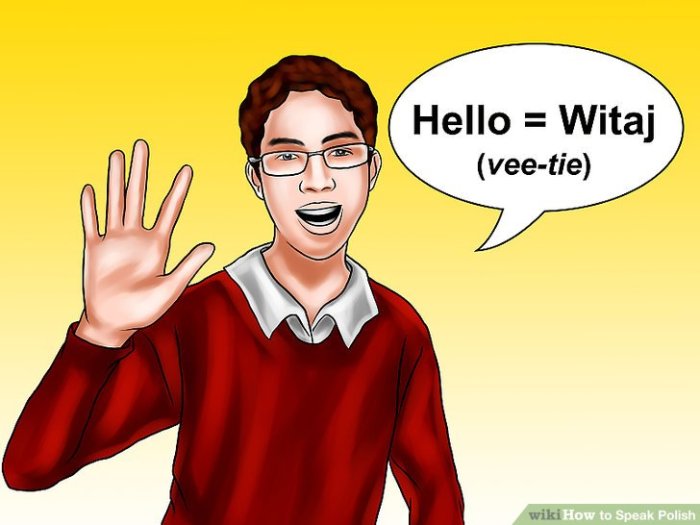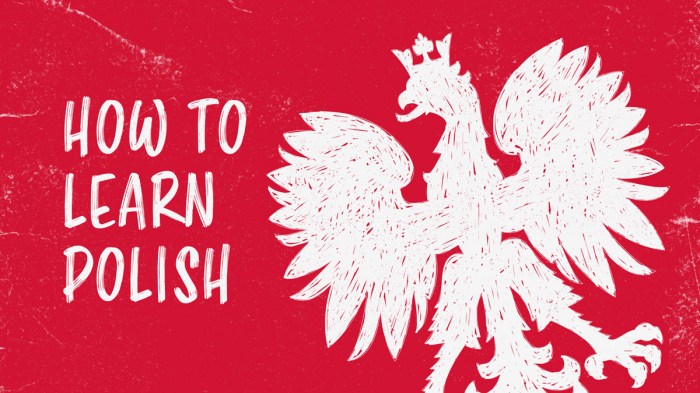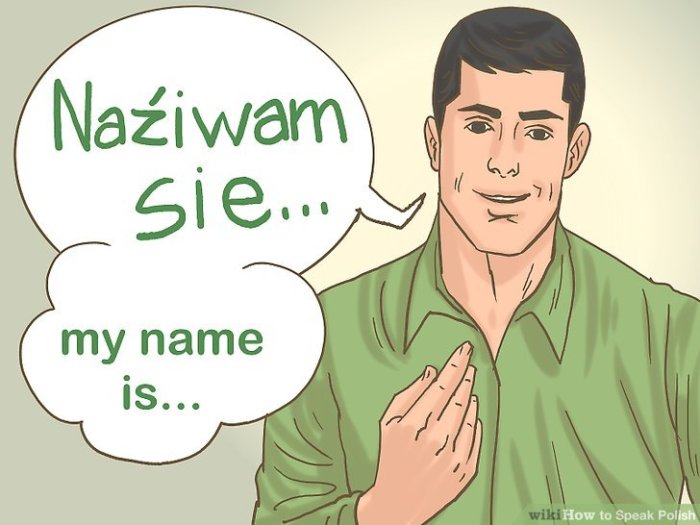How to Speak Polish Fluently: Mastering the Language with Ease dives into the essentials of speaking Polish effortlessly. From understanding the basics to immersing yourself in the culture, this guide covers it all in a comprehensive and engaging manner.
Explore the intricacies of pronunciation, cultural nuances, and effective practice methods to enhance your Polish speaking skills.
Understanding the Basics of Polish

Learning Polish pronunciation is crucial as it can significantly impact your ability to communicate effectively in the language. Proper pronunciation ensures that you are understood by native speakers and helps you grasp the nuances of the language better.
Common Polish Phrases and Greetings
-
Dzień dobry
-Good morning
-
Cześć
-Hi/Hello
-
Dziękuję
-Thank you
-
Proszę
-Please/You’re welcome
-
Jak się masz?
-How are you?
Polish Alphabet and Unique Characters
The Polish alphabet consists of 32 letters, including unique characters such as ą, ć, ę, ł, ń, ó, ś, ź, and ż. These characters add distinct sounds to the language and are essential to mastering Polish pronunciation.
Immersing Yourself in Polish Culture

Immersing yourself in Polish culture is essential for mastering the Polish language. By understanding the customs, traditions, and holidays of Poland, you will gain a deeper insight into the language and its nuances.
Polish Customs and Traditions
Polish culture is rich with customs and traditions that are deeply rooted in history and folklore. Some common customs include greeting others with a handshake, especially when meeting someone for the first time, and showing respect to elders by using formal titles like “Pan” (Mr.) or “Pani” (Mrs.). Additionally, Poles place great importance on family gatherings and celebrations, such as weddings and name days.
Polish Holidays
- Wigilia: Christmas Eve is one of the most important holidays in Poland, marked by a festive meal known as Wigilia, where families share a 12-course meatless dinner.
- Śmigus-Dyngus: Also known as Wet Monday, this post-Easter tradition involves playfully splashing water on others as a symbol of cleansing and rejuvenation.
- Dożynki: The Harvest Festival is celebrated in the autumn, highlighting the importance of agriculture and rural traditions in Polish culture.
Popular Polish Foods
Polish cuisine is hearty and flavorful, reflecting the country’s agricultural heritage and diverse influences. Some popular Polish dishes include:
- Pierogi: Dumplings filled with various ingredients such as potatoes, cheese, or meat, often served with sour cream.
- Bigos: A traditional stew made with sauerkraut, meat, and mushrooms, known as the “hunter’s stew.”
- Zurek: A sour rye soup with sausage and hard-boiled eggs, typically enjoyed during Easter.
Practicing Speaking Polish
Practicing speaking Polish daily is crucial for improving fluency and confidence in the language. There are several methods and strategies that can help you enhance your speaking skills effectively.
Different Methods for Practicing Speaking Polish Daily
- Engage in daily conversations with native Polish speakers or language partners
- Practice speaking by yourself in front of a mirror or recording yourself
- Join Polish language meetups or conversation groups
- Listen to Polish podcasts, music, or watch Polish movies with subtitles
Tips on How to Find Language Exchange Partners for Polish Practice
- Utilize language exchange websites or apps such as Tandem or HelloTalk
- Attend language exchange events in your local community or online
- Join social media groups or forums dedicated to Polish language learners
- Reach out to Polish language teachers or tutors for conversation practice
Strategies for Overcoming Language Barriers and Gaining Confidence in Speaking, How to Speak Polish Fluently
- Start with simple conversations and gradually increase the complexity as you gain confidence
- Focus on effective communication rather than perfection in pronunciation or grammar
- Practice speaking in different scenarios to improve versatility in using the language
- Don’t be afraid to make mistakes; they are a natural part of the learning process
Utilizing Language Learning Resources

Utilizing various language learning resources can greatly enhance your journey to speaking Polish fluently. Here are some recommended platforms and materials to consider:
Online Platforms and Apps
- Babbel: Offers interactive lessons and exercises to improve your Polish vocabulary and grammar skills.
- Duolingo: A popular app that provides fun and engaging language learning activities for beginners.
- Rosetta Stone: Known for its immersive approach to language learning, Rosetta Stone can help you develop a strong foundation in Polish.
Language Learning Books and Workbooks
Using language learning books and workbooks can provide structured lessons and exercises to reinforce your understanding of Polish grammar and vocabulary. These resources offer clear explanations and practice opportunities that cater to different learning styles.
Podcasts, Music, and Movies
- Podcasts: Listening to Polish podcasts can help improve your listening skills and expose you to natural conversations in the language.
- Music: Enjoying Polish music can help you familiarize yourself with the sounds and rhythms of the language, making it easier to pick up new words and phrases.
- Movies: Watching Polish movies with subtitles can enhance your comprehension skills and expose you to colloquial expressions and cultural references.
Diving Deeper into Grammar and Vocabulary: How To Speak Polish Fluently

When aiming to speak Polish fluently, delving into the intricacies of grammar and expanding your vocabulary are crucial steps in the language learning process. Let’s explore key grammar rules, common phrases, and effective strategies for enhancing your Polish skills.
Key Grammar Rules in Polish
Polish grammar can be challenging for learners due to its complex system of noun declension, verb conjugation, and grammar cases. Here are some essential grammar rules to keep in mind:
- Learn the seven cases in Polish, including nominative, genitive, dative, accusative, instrumental, locative, and vocative.
- Understand verb conjugation patterns for different tenses, moods, and aspects.
- Master the gender of nouns and adjectives, as well as their agreement in number and case.
Common Polish Phrases and Expressions
Expanding your vocabulary with common phrases and expressions can help you communicate more effectively in Polish. Here are some examples:
-
Dzień dobry
-Good morning
-
Jak się masz?
-How are you?
-
Proszę
-Please
-
Dziękuję
-Thank you
-
Na zdrowie
-Cheers/To your health
Strategies for Expanding Polish Vocabulary Effectively
Building a robust vocabulary is essential for fluency in any language. Here are some effective strategies for expanding your Polish vocabulary:
- Read Polish books, newspapers, and websites to expose yourself to new words and phrases.
- Practice using flashcards or language learning apps to memorize vocabulary efficiently.
- Engage in conversations with native Polish speakers to learn new words in context.
- Set specific vocabulary learning goals and regularly review and reinforce your knowledge.
Summary

In conclusion, mastering Polish fluency is within reach with dedication and the right approach. Embrace the language, culture, and resources available to become a confident Polish speaker.